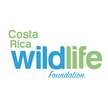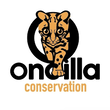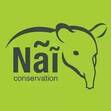The property is located in the northeast corner of ACLAP in the sector that corresponds to the district of Orosi in the Cartago province. The farm is adjacent to Tapanti National Park. And it is part of the biological corridor Tapanti-La Chonta. The forest present on the farm, ranges from secondary forest to primary forest in the highest parts, dominate this sector with oak trees.
The following photos are part of Queveri(our farm) monitoring program with trap cameras.
The following photos are part of Queveri(our farm) monitoring program with trap cameras.
Check some of the videos of our camera traps in youtube: |
|
We are also consider a bird hotspot and we are close by to important bird sites! |
Check out our species list in ebird. There might be a lifer waiting for you here!
|
Forest area:
Generalities of the area:
In this area the Tapantí National Park and the Rio Macho Forest Reserve are located.
The altitude of the area ranges from 700 m (El Humo, Pejivalle) to 3491 m (Cerro de la Muerte); geographically it is located between the coordinates 83 ° 93 '- 83 ° 50' W and 9 ° 79'- 9 ° 57 'N (Sf Tobar et al.). It has an average temperature of 18 ° C and 65% of cloudiness. These sites correspond to Lower Montane Rain Forest and Premontane Rainforest life zones, it is characterized for being one of the rainiest parts of the country with an average annual rainfall of 6.500mm (Carvajal and Villalobos Sf).
These climatic conditions are those that permit the existence of a diverse and abundant community of epiphytic plants such as bromeliads, orchids, ericaceas and moss that covers the trunks and branches of trees. The forest floor is covered by a lot of herbaceous plants, palms, heliconias, ferns and shrubs. The upper level is occupied by trees whose crowns form an irregular canopy. At higher altitudes the huge oak trees are dominatant, whose tops form a continuous canopy (Sanchez 2002). The area protects more than 45 species of mammals among which: tapirs, red brocket deers, cats, tayras, monkeys, agoutis, squirrels, bats, rabbits, coatis and raccoons (ACLAP sf).
The altitude of the area ranges from 700 m (El Humo, Pejivalle) to 3491 m (Cerro de la Muerte); geographically it is located between the coordinates 83 ° 93 '- 83 ° 50' W and 9 ° 79'- 9 ° 57 'N (Sf Tobar et al.). It has an average temperature of 18 ° C and 65% of cloudiness. These sites correspond to Lower Montane Rain Forest and Premontane Rainforest life zones, it is characterized for being one of the rainiest parts of the country with an average annual rainfall of 6.500mm (Carvajal and Villalobos Sf).
These climatic conditions are those that permit the existence of a diverse and abundant community of epiphytic plants such as bromeliads, orchids, ericaceas and moss that covers the trunks and branches of trees. The forest floor is covered by a lot of herbaceous plants, palms, heliconias, ferns and shrubs. The upper level is occupied by trees whose crowns form an irregular canopy. At higher altitudes the huge oak trees are dominatant, whose tops form a continuous canopy (Sanchez 2002). The area protects more than 45 species of mammals among which: tapirs, red brocket deers, cats, tayras, monkeys, agoutis, squirrels, bats, rabbits, coatis and raccoons (ACLAP sf).
|
|
|
Conservation Allies:
Taken from their webpage: "CRWF work to ensure the prevalence of wildlife and its habitat through interdisciplinary and community-based stable conservation initiatives that promote coexistence and improve decision-making. We envision our organization to be a worldwide model in wildlife conservation, in both: natural ecosystems and anthropogenic landscapes. Our fields of action include research, education, communication, and marketing, all aimed to produce conservation action to reduce the threats that wildlife is facing."
Currently we are part of the following research proyects of the Foundation:
Oncilla ConservationSmall wild cat conservation program
Oncilla Conservation (@oncillaconservation) • Instagram photos and videos |
Nai ConservationTapir conservation action from Costa Rica
Nai Conservation (@naiconservation) • Instagram photos and videos |
To learn more about them visit their webpage FUNDACIÓN – COSTA RICA WILDLIFE



